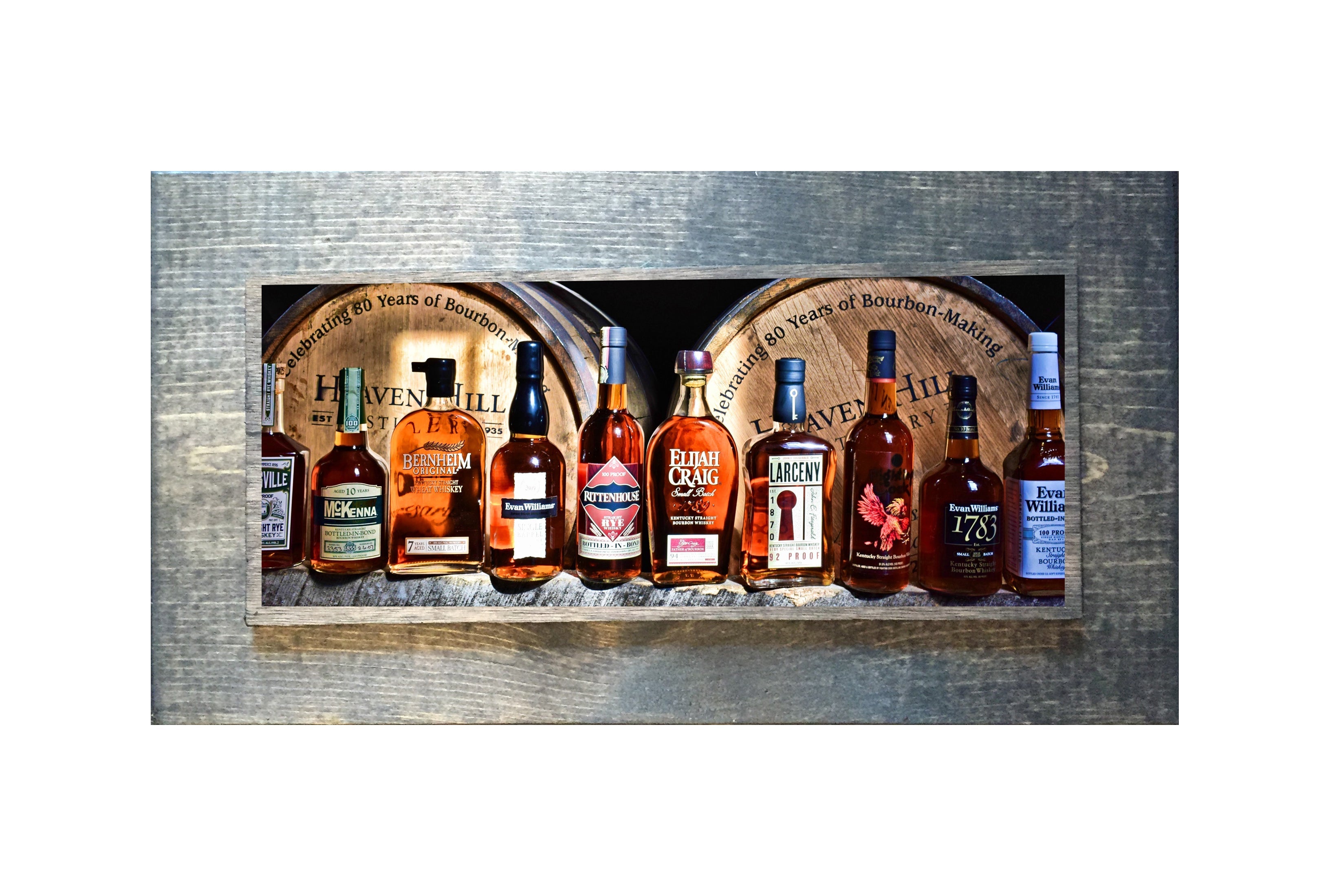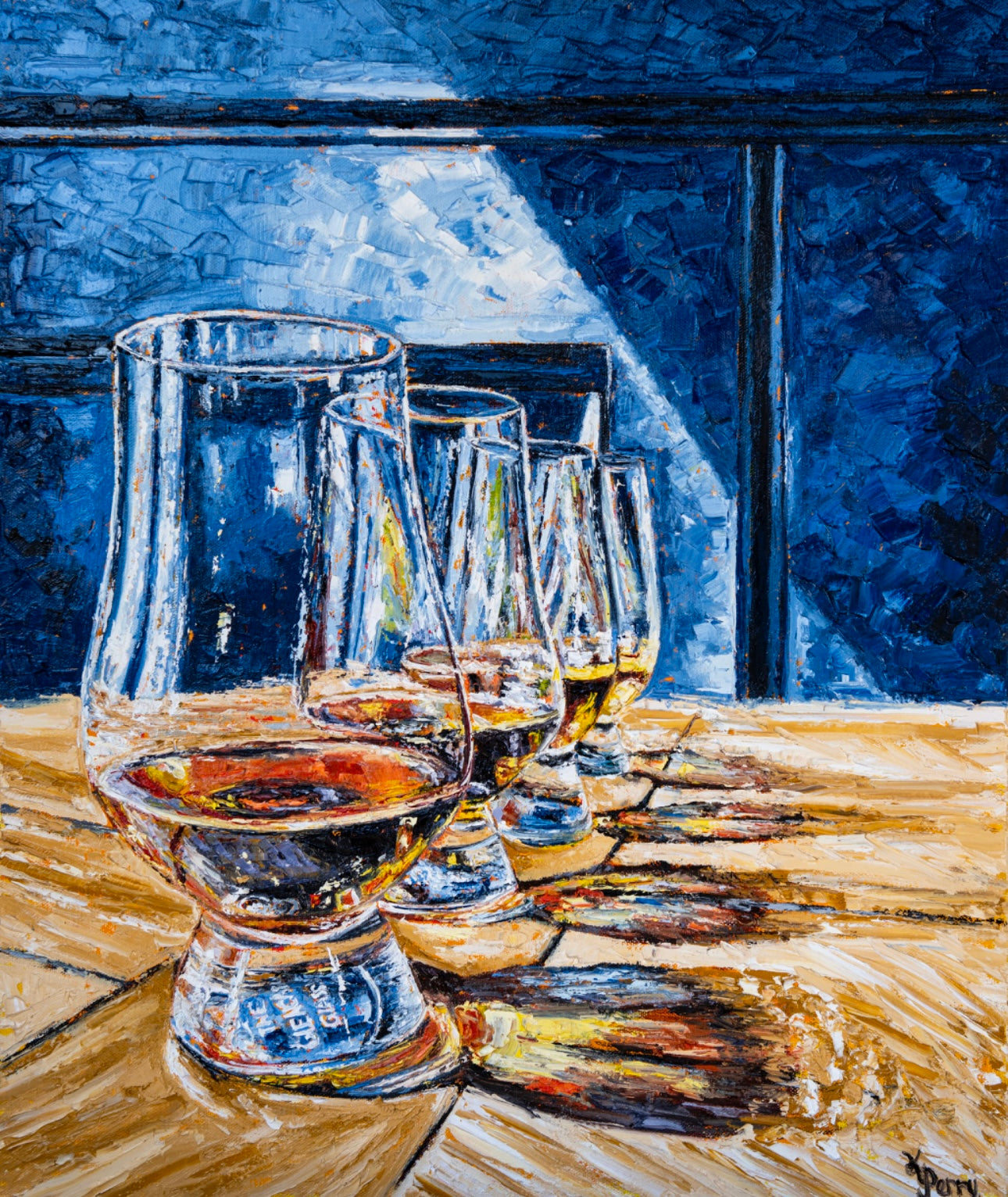Limited Edition Bourbon Art: Why Collectors Are Gathering to Distinct Finds
Limited Edition Bourbon Art: Why Collectors Are Gathering to Distinct Finds
Blog Article
The Relevance of Whiskey Art in Celebrating Heritage and Craftsmanship in the Beverage Industry
The detailed connection between bourbon art and the celebration of heritage and workmanship within the drink industry can not be overemphasized. Via thoughtfully made tags and bottles, bourbon brands envelop their historic origins and the artisanal skills that specify their production techniques.
The Historical Origins of Whiskey
At the heart of bourbon's appeal exists an abundant tapestry of historic roots that map back to ancient human beings. The origins of bourbon can be linked to the purification practices of the Sumerians and Babylonians around 2000 BCE, where very early forms of fermented grain drinks began to arise. However, it remained in the Middle Ages that the art of distillation advanced dramatically, especially in Ireland and Scotland, bring about the development of bourbon as we know it today.
The term "scotch" itself stems from the Gaelic word "uisce beatha," meaning "water of life." This phrase highlights the social significance of whiskey in Celtic cultures, where it was usually related to routines, parties, and communal bonding. By the 15th century, distillation ended up being an acknowledged craft within reclusive areas, paving the way for the establishment of legal distilleries.
As profession courses increased, scotch's appeal expanded, going beyond local borders and recording the passion of connoisseurs worldwide. Limited Edition. This historic trip shows not just the workmanship behind bourbon manufacturing yet also its integral role in social and social contexts, noting it as a substantial beverage throughout history
Artistic Expression in Branding
Scotch branding stands as a compelling crossway of creativity and commerce, where visual identity plays an essential role in shaping consumer understanding. The looks of scotch labels, packaging, and marketing materials mirror not just the brand's story but also its core values and heritage. Via imaginative expression, distilleries communicate a narrative that resonates with customers, stimulating emotions and sparking links.
Making use of color, typography, and images in branding serves to differentiate items in a saturated market. Standard motifs might evoke a feeling of credibility and craftsmanship, while modern-day styles can signify advancement and forward-thinking. This strategic creative direction improves brand name recognition and commitment, permitting consumers to build a personal connection with the bourbon they select.
In addition, artistic expression in branding usually works as an event of local heritage. Distilleries frequently integrate neighborhood symbols or historic referrals into their styles, developing a local color that welcomes customers to take part in a wider social experience. Inevitably, the artistry behind scotch branding not just boosts visual appeal however likewise improves the overall narrative of the brand, promoting a much deeper admiration for the craftsmanship and heritage embedded in each bottle.
Workmanship in Bottle Style
The virtuosity evident in whiskey branding extends beyond visual identity to include the workmanship associated with bottle style. Each bottle functions as a vessel not simply for the spirit within, however additionally for the tale it informs concerning its beginning, practice, and quality. The layout procedure needs careful interest to detail, as elements such as closure, shape, and product add substantially to the total assumption of the bourbon.
Craftsmanship in container design involves selecting high-quality glass that can improve the bourbon's shade and clearness, while also providing a responsive experience for the customer. The shape of the container should be both visually enticing and useful, commonly reflecting the heritage of the brand name. Lots of distilleries choose distinct forms or embossed logos that stimulate a sense of credibility and history.
Moreover, the tag layout and typography play a critical function in communicating the brand name's narrative. Realism Art. A well-crafted bottle not just mesmerizes the consumer's eye however also reinforces the he said brand name's commitment to top quality and tradition. In this means, the craftsmanship of container design comes to be an important facet of the scotch experience, merging virtuosity with a profound regard for heritage
Social Relevance of Bourbon Art
Celebrating practice and craftsmanship, the cultural about his value of scotch art transcends plain aesthetic appeals, linking with the social and historical narratives of the regions where it originates. Each bottle offers as a canvas, depicting the special stories, folklore, and practices that have actually shaped regional whiskey-making techniques. The intricate styles commonly reflect the heritage of the distillers, integrating signs and motifs that resonate with the society and worths of their areas.

Furthermore, scotch art plays an essential function in public gatherings and parties, acting as a concrete web link in between people and their shared experiences. By valuing the artistry in scotch product packaging, consumers grow a deeper understanding and regard for the craft, ultimately improving their pleasure of the drink itself.
Modern Trends in Whiskey Presentation
In the last few years, the presentation of scotch has actually evolved to show modern preferences and trends while still honoring traditional craftsmanship - Realism Art. Distilleries are increasingly focusing on visual components webpage that boost the overall drinking experience, connecting the void in between heritage and modernity
Innovative bottle layouts have emerged, typically integrating lasting products and imaginative labels that tell compelling stories. Numerous brands now team up with local artists, infusing their products with unique visual expressions that resonate with consumers. Additionally, limited-edition releases are typically packaged in collectible containers, including value and allure for aficionados.

Conclusion
In final thought, scotch art serves as an important conduit for expressing the heritage and craftsmanship inherent in the drink industry. Through intricate branding, innovative container layouts, and culturally substantial creative aspects, scotch brands effectively recognize their customs and link with consumers.


Craftsmanship in bottle layout includes choosing top notch glass that can enhance the bourbon's shade and clearness, while also providing a responsive experience for the customer. In this means, the workmanship of bottle layout becomes an essential facet of the scotch experience, combining virtuosity with a profound respect for heritage.
In final thought, bourbon art offers as an essential channel for sharing the heritage and craftsmanship inherent in the drink market.
Report this page